Recommendation: Start with a two-city baseline: 3 nights in Kazan and 2 nights in Moscow, take overnight trains to save on hotel nights, and pick hostels with easy metro access to keep within budget. This gives you a clear framework to compare costs including transit and meals, and it maximises availability of affordable options in both cities.
Budget plan details: Kazan dorm beds begin around 12–18 USD per night and Moscow dorms around 15–25 USD, with private rooms often 25–40 USD in peak season. Rail between Kazan and Moscow is typically upto 45 USD if booked 2–3 weeks ahead. Daily city transit caps at about 4–6 USD, and meals from markets run 3–6 USD, letting you eat well without overspending. A hostel facility with a shared kitchen helps you contain costs and extend your budget.
Make time for sights that matter to tourist without draining your wallet: in Kazan, Kaban Lake and a nearby memorial complex offer free or low-cost options, and Moscow’s riverfront parks also provide memorable views without high entry fees. The источник of such low-cost ideas comes from local guides and official portals that publish seasonal deals and hours for museums and outdoor spaces, so you can plan ahead.
The opulent façades around Moscow’s Bolshoi district showcase culture with affordable options. For a taste of bolshoi theatre, look for standing or upper-seat tickets, book in advance, and you would enjoy high-quality performances without overspending.
This plan works for everyone, including first-time travelers; youre in control of your schedule and can adjust between Kazan and Moscow based on seasonal deals, local festivals, and the availability of budget flights and trains.
Give yourself a realistic budget and you can save upto 60% compared with private tours; costs are predictable when you book ahead and use public transport, and the system is made for travelers who want depth without overspending. The источник for these numbers is traveler reports and city portals that track seasonality and deals.
Pocket Friendly Russia: Budget Travel Guide
Starting with a concrete move, choose apartments near a metro entrance to maximize access to central sites and cut transit costs. This setup keeps you flexible and lets you stay longer in places that interest you, while keeping your daily spend predictable.
Wear comfortable shoes, pack a lightweight rain jacket, and map your days around free or low-cost places to explore. Street markets, parks, and church complexes often mark heritage on the doorstep, letting you taste the culture without big ticket prices. This approach helps you stay energized while exploring on a tight budget.
Use applications to compare lodging, set price alerts, and lock in initial reservations. Reach hosts by email or contact forms, and you would often get tips on the best entrance times for popular sites. Booking ahead saves you 20–40% compared with last‑minute stays.
In vast Russia, a confluence of history and modern life unfolds across cities and villages. Plan visits to places with heritage and the best light at dusk, then mix in free museums or city‑run galleries. A well‑marked route helps you cover more ground with less backtracking, adding a practical edge to your itinerary.
Prices vary by region: in capital regions you’ll find apartments 3,000–7,000 RUB per night for a modest one‑bed, while in smaller towns you may pay 1,400–3,500 RUB. A mid‑range metro pass keeps transport predictable: single rides around 60 RUB, with day passes around 250–350 RUB. Food options range from 300–700 RUB for quick bites to 800–1,500 RUB for a sit‑down lunch. If you have taken a taxi, compare the meter price to the official taxi apps to avoid surprises.
Access local wisdom through market stalls and neighborhood cafes; many places offer tasting menus at fixed prices, and you can negotiate for group visits. Museums often provide reduced entrance for students, seniors, or early hours, a possible way to stretch your budget. In the confluence of traditions, a day trip to a geothermal spa or a nearby river town can be a dream come true and still cost less than a day in a big city.
Silver‑lined bargains appear when you schedule late in the day or during shoulder seasons; apartments with kitchenette save if you cook at home; always check the initial cost and any cleaning fees before you confirm. If you need help, contact the host about changes in your schedule and possible extensions.
When you plan, you can aim for a perfect balance of iconic sights and offbeat neighborhoods. Keep the dream alive by mixing mobility via metro with on‑foot explorations, and use public transit as your standard mode. This Pocket Friendly approach reveals a rich, authentic side of Russia while keeping expenses predictable.
Find and Book Flight Deals for Russia
Explore flexible dates on your basis, cover direct and one-stop options to Russia’s hubs. Start with Moscow (SVO, DME) and Saint Petersburg (LED) to maximize value, then add Sochi (AER) for a coastal break. Leave room for price dips by checking a few days around your initial target, and use weekday departures when fares tend to be lower. Historical cities, a confluence of routes, and a representative mix of options create a solid baseline for a budget-friendly plan to protect your pocket.
Options on a pocket basis come from budget carriers like Pobeda and S7, plus overseas connections when a longer leg lowers the total price. These airline houses offer splendid fares when booked in advance and on weekdays. Included services vary by route, but many domestic flights include a carry-on and a basic seat; check the facility and stated baggage rules to avoid surprises. Look for value-adds such as flexible change options or bundled services that cover meals on longer legs, and keep an eye on nature-friendly routes that skim the coast or the historic heart of the cities. Treat yourself to a balanced plan that can leave you with savings for experiences like a circus show or a museum pass during a longer stopover.
| Route | Airline/Operator | Typical Price (USD) | Included | Notes |
|---|---|---|---|---|
| Moscow SVO → Sochi AER | Pobeda | 60–120 | Carry-on bag | Nonstop; domestic; quick turnarounds |
| Moscow SVO → Saint Petersburg LED | Aeroflot / S7 / Pobeda | 40–90 | Carry-on bag | Frequent daily departures; multiple options |
| Moscow SVO → Berlin BER | Aeroflot / S7 | 200–420 | Standard services | International; check visa/entry rules |
| Moscow SVO → London LHR | Aeroflot / Partner network | 350–700 | Standard services | Overseas route; review baggage allowances and layover options |
Budget Lodging in Major Cities: Hostels, guesthouses, and affordable rentals
Recommendation: In the largest moscows and other major cities, choose a private room in a budget hostel or well-reviewed guesthouse located near metro stations. This minimizes transport time, keeps you close to the main stations and consulates, and simplifies planning. For one persons, start with a private room; for two or more, look for a twin or small apartment to keep costs per person low. Pay attention to timing and avoid peak weekends when rates rise; if possible, book at least two weeks ahead to secure fair prices.
Price ranges (per night, current data) to help your planning: Moscow: dorm beds 800–1200 RUB; private rooms 2500–4500 RUB. St. Petersburg: dorm 700–1100 RUB; private rooms 2000–3800 RUB. Novosibirsk: dorm 450–750 RUB; private 1500–2700 RUB. Yekaterinburg: dorm 500–900 RUB; private 1800–3200 RUB. Kazan: dorm 500–800 RUB; private 1500–2600 RUB. Sochi and other resort-adjacent stays rise in peak timing, with dorms 1200–2000 RUB and private rooms 2500–4500 RUB. For longer stays, consider affordable rentals like one-bedroom apartments in non-tourist locations to spread costs across the week and reduce costs per night.
Booking tips: look for hosts offering free kitchen access and laundry, which helps your budget over several days. If you travel with a small group, negotiate a private 2–3 room option; many hosts will drop the nightly rate for stays of multiple nights. Compare reviews and proximity to transit stations, and verify what’s included in the price to avoid hidden charges. For safer planning, check consulate districts and nearby routes to minimize coaches or taxi use after late arrivals.
Neighborhood choice matters: stay near central stations for easy access to trains and buses, yet pick green areas and quieter streets to improve sleep quality. In current markets, options located within 15–20 minutes of the metro balance convenience and price. If you see a white facade with clean common spaces, that often signals good maintenance and honest pricing, reducing the risk of surprises at checkout.
Doświadczenia from travelers like Paul and Peter show practical wins: Paul found a white-walled guesthouse in a central district of Moscow with a shared kitchen, paying around 900 RUB for a dorm bed and 2600 RUB for a private room; he beat seasonal spikes by booking two weeks ahead and contacting the owner directly. Peter’s route from St. Petersburg to Kazan via train kept costs down by choosing a compact studio near the station, avoiding extra transport spending. Their experiences confirm that staying near major stations and within proximity to consulates reduces stress and keeps costs predictable.
Keep your plan flexible: set a daily budget, review current prices, and switch between a smaller room and a shared option for a night or two when prices spike. With credible experiences and clear choice in planning, you can stay comfortably in the largest cities without overspending–the key is smart timing, advance planning, and a willingness to explore affordable yet safe districts near main transport hubs.
Low-Cost City-to-City Travel: Trains, buses, and regional transport hacks
Book overnight trains and late buses to link major cities while keeping hotel nights to a minimum. Pack light, secure private space on longer legs when possible, and buy tickets 4–8 weeks ahead to lock lower fares.
- Trains – Moscow to St. Petersburg remains the marquee route. Fast trains cover 660–700 km in about 3.5–4.5 hours; standard seats typically run 2,000–4,500 RUB when booked early. Private compartments (kupe) are higher in price but offer quiet rest and a predictable bed for a long day. Night trains save a hotel night and put you close to your next stop. Obtain tickets through the official portal or trusted agents, and check cancellations or flexible options. The line passes through several towns, providing passing views and a glimpse of river crossings along the way. If you need tailored tips, contact Thomas at the Moscow desk.
- Buses – Intercity buses connect Moscow with Kazan, Nizhny Novgorod, Samara, and beyond. Typical fares for medium distances run 700–1,800 RUB; longer legs run 2,000–3,000 RUB. Travel times vary from 6–8 hours (Moscow–Nizhny) to 10–12 hours (Moscow–Kazan). Buses depart from city outskirts; choose daytime options to maximize time in each place and avoid peak periods for lower prices. Check operator sites for cancellations or changes; some routes offer free changes if booked in advance.
- Regional transport hacks – Build a tight sequence to minimize backtracking and boost reliability. Use central stations for short walks to the city center, and plan last-mile transfers by tram, bus, or metro. Carry a small glass and a water bottle; stations often have vending machines and quick snack options. Look for short, daily legs to keep the pace exciting without burning out. If prices spike, compare a short flight option–sometimes the time saved outweighs the fare. Keep some backup routes handy and monitor last-minute deals 2–7 days ahead. For on-the-ground help, locals are a great source of inexpensive links you won’t see online. Plus, you’ll notice silver signage and friendly service that make travel smoother. For personalized advice, ask Thomas for tips tailored to Moscow and nearby Moscows corridors.
Across Russia, this mix of rail and road links hundreds of towns with affordable options. Adhere to posted rules, obtain necessary documents in advance, and stay flexible to keep your plans light. When you return to your base, you’ll feel refreshed, having kept costs in check while exploring long, scenic routes beyond the capital. The approach favors private, efficient travel that fits a tight schedule and a curious spirit.
Eating Well for Less: Market bites, supermarket meals, and cheap favorites
Plan a budget-friendly food day by starting at the lively market in the city centre, grabbing market bites, then refueling with a ready-to-eat supermarket meal, and finishing with a light street snack to stay full without overspending.
At the market, enjoy pelmeni, pirozhki, and blini from family stalls. Typical price range runs 40-100 RUB per pirozhki, 150-250 RUB per serving of pelmeni, and 60-120 RUB for blini with jam. Seasonal fruit runs 400-800 RUB per kg in warm months; a liter of kefir costs 60-90 RUB. This circus of stalls delivers fresh taste, culture, and bright lights, with quick, friendly service located near the centre. When you come across stalls, try different fillings and compare value, passing a busy row of vendors.
In supermarkets, choose ready-to-eat salads, soups, and hot meals. A full plate from the deli costs about 150-350 RUB, while a liter of kefir runs 60-90 RUB, a loaf of bread 40-70 RUB, and a kilogram of potatoes 30-60 RUB. A jar of borscht or beet soup for two can be 120-250 RUB. Additionally, check current sale racks and stock up on staples for the centre route. For itineraryactivity, plan a simple route that pairs market bites with grocery picks for flexibility and predictable costs.
Booking and budgeting go hand in hand: locate stays near markets to keep your plan practical. Bungalows can be booked for 1500-2500 RUB per night; booking early helps you secure a standard room without paying for opulent features. If you travel as an individual, this approach stays friendly to the budget while keeping options open for day trips to nearby sights.
Wear comfortable footwear, bring a reusable bag, and carry cash for market stalls that avoid card fees. Pass by the morning vendors to catch fresh items, and watch price tags for current deals. Health and safety laws vary by region, so follow posted guidelines and local signs. This approach suits individual travelers who want to savor street bites and culture without worry.
Cap the day by visiting a cathedral or a small museum near the market; many centres are located within walking distance of dining spots in major cities, letting you mix architecture with a light meal. A buckwheat dish with chicken from a stall, rye bread with cheese from the deli, and a kefir-based treat offer a full, balanced finish that stays within budget and highlights russia’s diverse flavour range.
Free and Inexpensive Local Experiences: Museums with free days, nature, and offbeat tours
Plan a two‑day moscow circuit: two free‑entry museums on their known free days plus a short nature walk along the embankment to save money and maximize variety.
- Check official pages or email a representative to confirm free days; in moscow, many museums offer free entry for everyone on specific days. Save the dates, then continue with online booking to reserve slots when possible. Some venues may charges for special exhibits, so verify ahead.
- Use online and booking options to compare slots; booking and bookingcom help you lock a free or reduced‑cost visit without standing in line. There, you may encounter a small deposit or charges for add‑ons–know the terms before you go.
- Explore nature close to the city: stroll the embankment paths, join a short forest loop, or visit a free city park with ancient monuments inside; these easy routes keep the day exciting and budget‑friendly.
- Seek offbeat tours that highlight hidden courtyards, little museums, and local markets; a knowledgable representative can suggest routes toward lesser‑seen sites, turning a routine day into a memorable experience.
- Sample day plan: start at the embankment at sunrise, visit a free entry venue on its day, then ride a short metro or tram to a nearby park and finish with a coffee near a monument area–the combination feels heaven for budget travelers.
- Where to stay: apartments near central zones save transit time and money; many options are accepted on online platforms, with easy cancellation and flexible terms. Look for listings that offer easy booking and email confirmations from a known host.
- Practical means to maximize value: bring a light backpack, water, and a map inside your phone; plan routes that use easy transfers and avoid peak crowds. This approach helps you keep to a tight deposit budget, plus you’ll have more time for spontaneous discoveries there.
- Geothermal or resort day trips: if you crave a relaxation break, combine a short trip to a nearby resort town with free or low‑cost museum visits; this adds variety and can be a cost‑effective way to diversify your Moscow‑region experiences.
- Monuments and facilities: many city sights offer free access to exterior views and outdoor monuments; inside spaces, look for days when galleries open to the public at no charge or with a minimal fee. Always check there on the day via email or a quick chat with a local representative.

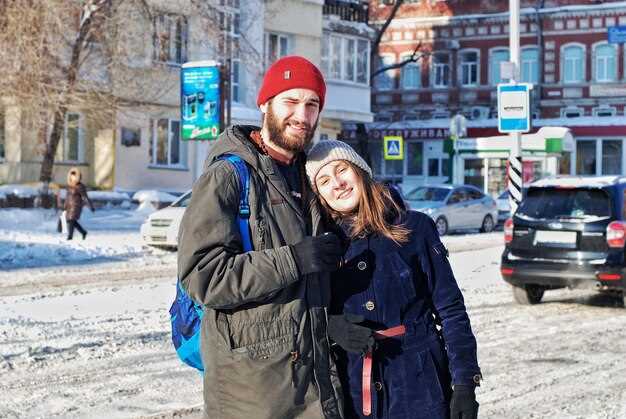 Pocket Friendly Russia – How to Travel Russia on a Budget">
Pocket Friendly Russia – How to Travel Russia on a Budget">


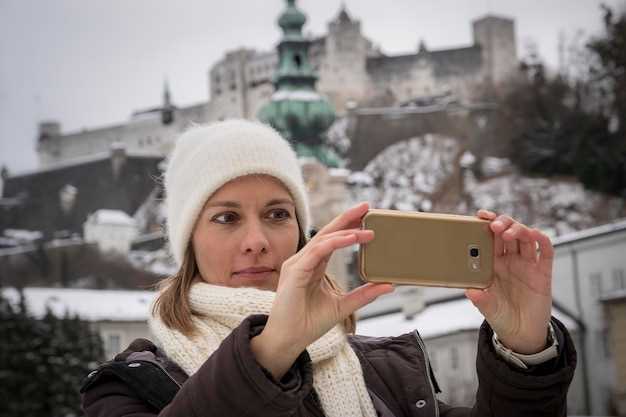
 Russian Train Guide – Travel by Rail Across Russia">
Russian Train Guide – Travel by Rail Across Russia">
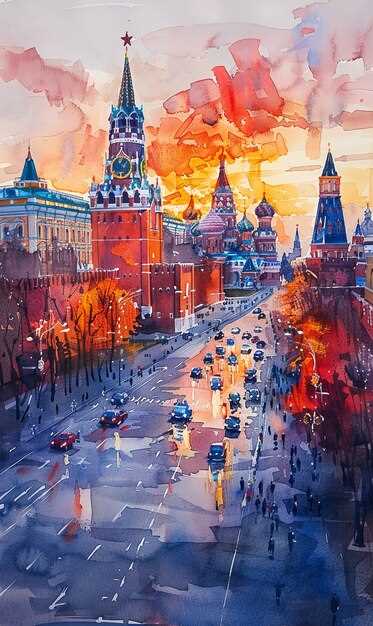 Moscow’s Contemporary Art Scene in 2025 – Key Galleries & Artists">
Moscow’s Contemporary Art Scene in 2025 – Key Galleries & Artists">
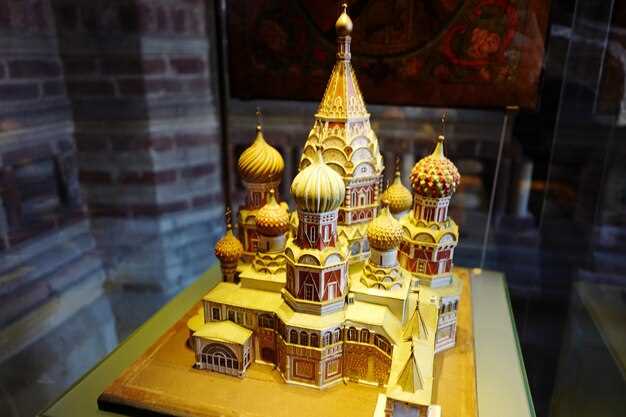 Moscow Kremlin – History, Architecture & Visiting Guide">
Moscow Kremlin – History, Architecture & Visiting Guide">
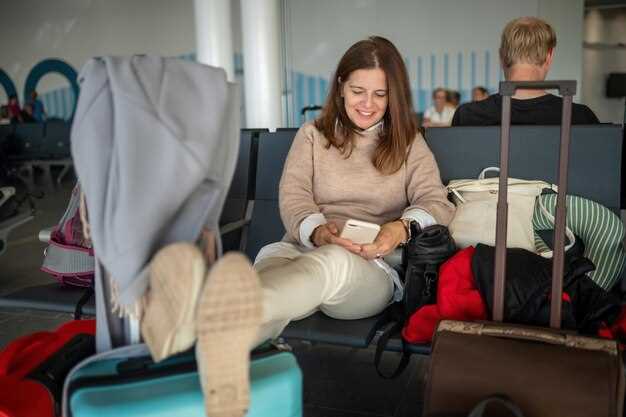 AirHelp’s Guide to the Airport Experience in Russia – Practical Tips for Travelers">
AirHelp’s Guide to the Airport Experience in Russia – Practical Tips for Travelers">
 Travel Insurance for Russia – Essential Guide to Coverage, Costs, and Tips">
Travel Insurance for Russia – Essential Guide to Coverage, Costs, and Tips">
 Rainy Day Moscow – Best Indoor Attractions for Wet Weather in 2025">
Rainy Day Moscow – Best Indoor Attractions for Wet Weather in 2025">
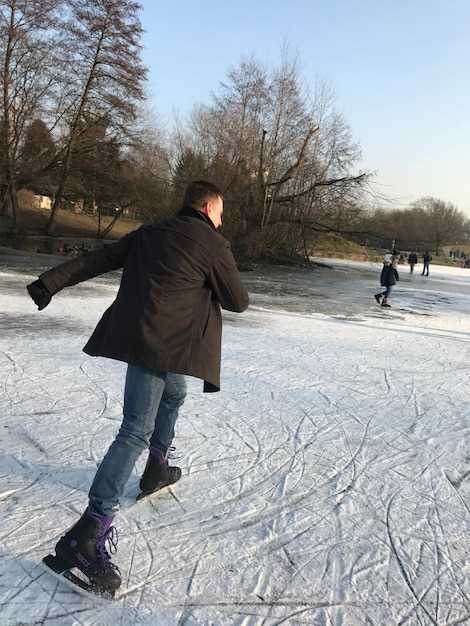 Where to Go Skating in Moscow – Top Ice-Skating Spots">
Where to Go Skating in Moscow – Top Ice-Skating Spots">
 Moscow Airport Taxi – Book Fixed-Price Transfers tofrom Moscow Airports | Pay in Your Currency">
Moscow Airport Taxi – Book Fixed-Price Transfers tofrom Moscow Airports | Pay in Your Currency">